In this set of three analyses, I am going to give a brief overview and tactical analysis of all 18 teams in the Bundesliga, starting with the first six in alphabetical order.
I teamed up with Zoltan Toth, an excellent data analyst who also writes for the site, and he created these fantastic graphs to highlight every team’s performances based on the same set of metrics.
The yellow in these graphs show possession and this is based on a team’s overall possession percentage along with the number of passes they play per 90. The dark blue part of the graph represents a team’s direct play, combining the number of long passes and progressive passes a team plays per 90. The green, individual progression, also shows the amount of 1v1’s and progressive runs a team makes per 90. The light blue, showing a team’s final third threat, shows the number of touches a player on that team takes before shooting on average, as well as their expected goal minus their expected goal chain. And finally the red, which shows pressing efficiency, combines their PPDA along with their defensive duel success percentage.
So in this first part, I am going to present an analysis of the tactics of Augsburg, Bayer Leverkusen, Bayern Munich, Borussia Dortmund, Borussia Monchengladbach, and Eintracht Frankfurt.
Augsburg – direct passing, dangerous from wide areas and on the counter, but sloppy at the back
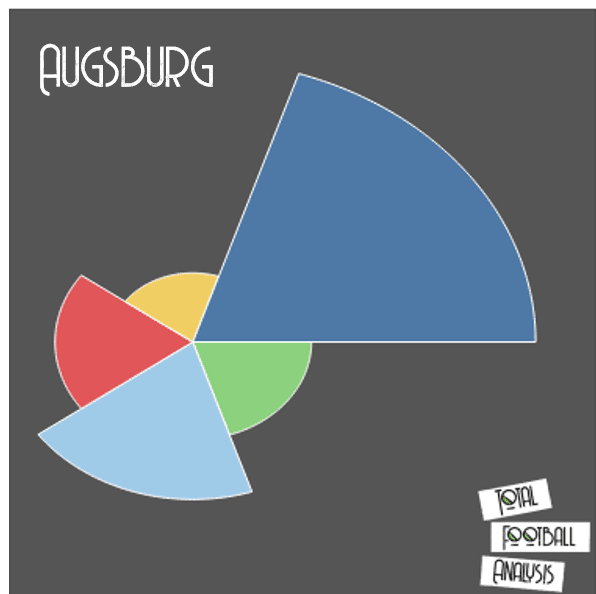
Augsburg are sat in 14th place on 26 points, and could yet be dragged further into the relegation dogfight, should Werder Bremen and Fortuna Düsseldorf string together a good run of results. It will be interesting to see how they get on under new Head Coach Heiko Herrlich after they sacked previous Head Coach Martin Schmidt at the beginning of March. It has hardly been an ideal time for a new Coach to come in and seek to impose his ideas on his new team, and this is a risky decision from the Augsburg board at such a crucial point in the season.
We can see from looking at the image above that Augsburg don’t press a great deal and concede a fair amount of possession. Their 15.23 PPDA is the lowest in the league and only Angers and Newcastle have a less intense press than them across Europe’s top five leagues.
They look to soak up pressure and frustrate teams, and the likes of Philipp Max, Marco Richter and Ruben Vargas are a handful on the counter.
They predominantly play in a 4-4-2 and will press in this structure before dropping into a 4-5-1 in deeper areas. In possession, they are far more flexible and will push players forward with both centre-backs and the pivot operating in a deep three, with the pivot just in front, whilst they commit their full-backs forward into midfield and push a midfielder up to support the front two in a 4-3 formation. They are able to do this due to the threat from Max on the left flank who is given a lot of freedom to push forward, whilst in the example below, Vargas pushes inside and look for pockets of space there. However, he doesn’t strictly play inside by any means and is a threat on the flank too.
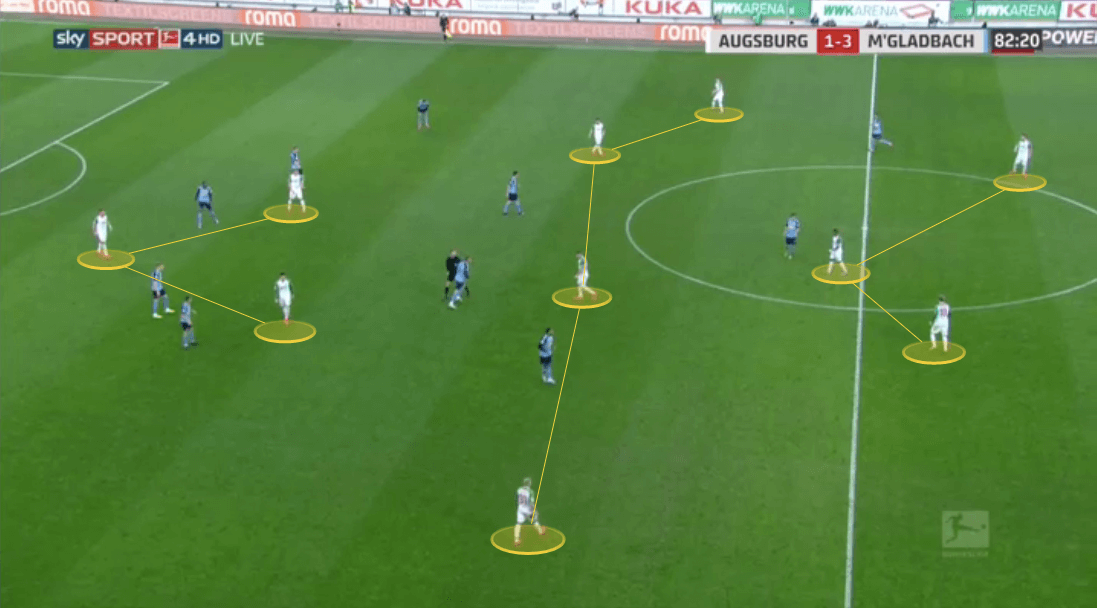
They are relatively dangerous from these wide areas, either through crosses, or getting the ball to the line and pulling it back, with many of their goals coming from these two avenues, and with Niederlechner in and around the six yard box, teams need to be wary.
As the graph suggests, Augsburg play a lot of long passes. This isn’t to suggest they should be labelled a long ball team. They do at least attempt to play out and will look to draw the opposition press out and stretch the team vertically before hitting a long ball forward. The defenders will also look for passes into Niederlechner’s feet, but he is big and strong and is a handful when the ball is in the air, so the aerial route is certainly used too. Niederlechner looks to head the ball just south of him, where the midfielders will rush to pick up the scraps and continue to seek to progress the ball from here.
Their 46.84 long passes per 90 minutes is only just above the league average, but it should be noted that they managed just 279.89 passes per game, by far the fewest amount in the league, meaning the number of long passes they are playing per game take up a great share of their overall possession. Unsurprisingly with this tactic, they have the lowest pass completion percentage as a team in the league with just 75%.
Augsburg don’t have any real ball progressors in their side, which perhaps leads to them choosing to play long so often with fewer passes to the final third and progressive passes than any team, and only Union Berlin have managed less progressive runs per 90 than them too. Of course, it could be argued that this is down to their decision to play long so frequently, but their long passes have just a 48.8% completion in themselves. Again, this is the lowest in the league.
Defensively they are weak on the transition, and their defence allows space too often inside by being too spread, or on the flanks, by being too narrow.
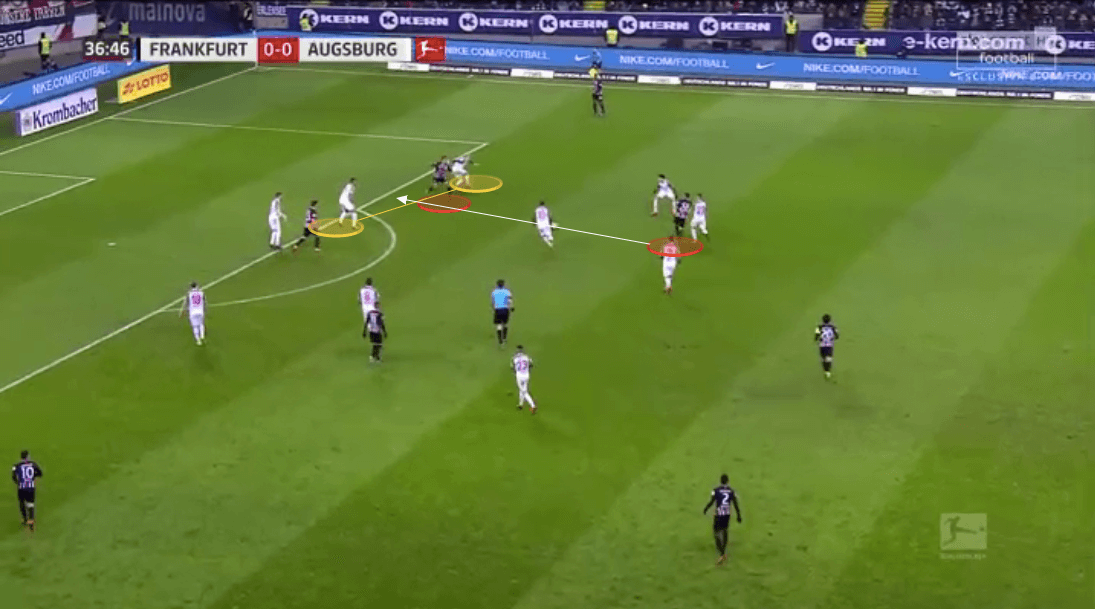
Their centre-backs are aggressive pushing out of the back line and it leads to gaps and general disorganization behind them, which good teams have and will continue to punish.
Key players: Niederlechner, Richter, Max
Expected points: 28.6
Actual points: 27
Remaining fixtures: Wolfsburg (h), Schalke (a), Paderborn (h), Hertha Berlin (a), (Koln (h), Mainz (a), Hoffenheim (h), Fortuna Düsseldorf (a), RB Leipzig (h)
Bayer Leverkusen – dominant in possession, manipulation of space, and the threat of Havertz
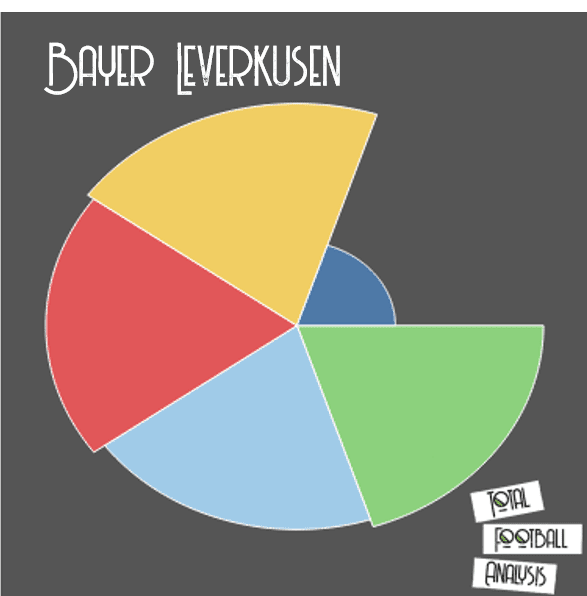
Bayer Leverkusen have had an excellent second half of the season and sit in striking distance of the Champions League places in 5th place on 47 points.
Just by glancing at the graph above we can get a very good idea of the sort of team Leverkusen are. They are a high pressing team, who keep the ball for long periods of the game, have individual talent who can progress the ball with passes and dribbling, and as a team, they are dangerous in the final third. All whilst playing a succession of short passes, with very little direct passing.
They average 62.2% possession, an amount only bettered by Bayern Munich, and are very patient on the ball. Teams will play compactly against them as they aim to prevent them playing centrally, specifically getting the ball into the feet of Havertz who operates in the 10 role, generally in a 4-2-3-1.
Havertz had a slow start to the season, having been linked with every big team under the sun in the summer. Since the start of the calendar year, he has been in electric form though, scoring seven and notching seven assists.
In more advanced areas he will drift to either side of the pitch and so much of what Leverkusen do in the final third will go through him.
Leverkusen have a host of attacking talents in the side, however.
Due to the amount of possession they have, and teams choosing to sit in against them, they naturally make a lot of crosses.
Karim Bellerabi, Leon Bailey and Moussa Diaby all rank in the top ten in the league for crosses attempted per 90 and as a team, they attempt the third most crosses in the league.
They are excellent at getting behind teams in wide areas too and will look to draw defenders out of space in the back line, before another attacker fills the same space, receiving the ball behind the lines like in the image below.
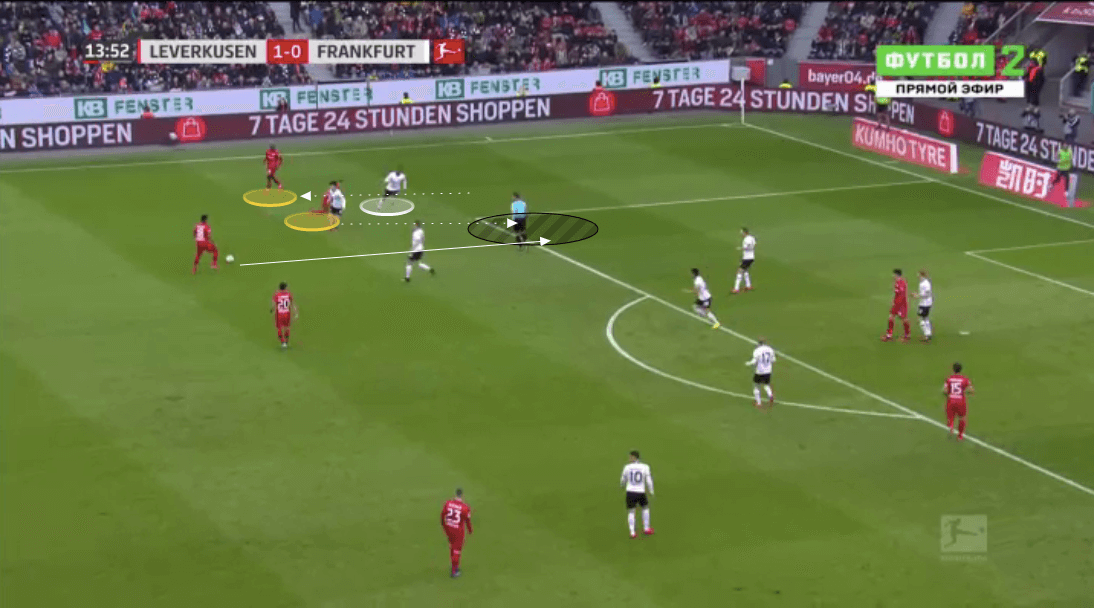
They are an outstanding team of dribblers with the fourth-highest success rate on the third-highest attempted in the league, which is phenomenal. The likes of Diaby and Bailey are explosive players who are brilliant in 1v1 situations and are excellent on the break too. Both are excellent options on the counter-attack, and Diaby will often stay high ready to be an option on the counter-attack in a high and wide area.
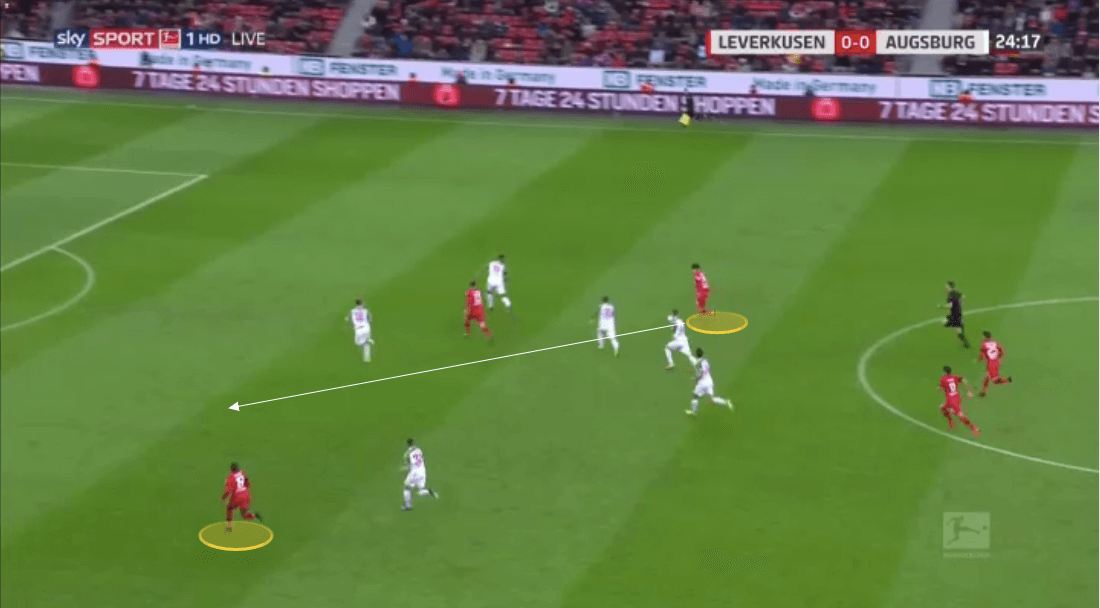
They are a top pressing outfit too. Their 7.72 PPDA again only bettered by Bayern.
They set up to show the opposition inside where they can counter centrally upon winning back possession in these areas. They are quite flexible in how they approach this and will adjust to the opposition should they need to, as they did in pressing in a 5-2-3 shape against Leipzig and Union Berlin over two recent fixtures. However, we will generally see them press with a front three who instantly become attacking options if the man-marking midfielders successfully win the ball back in the middle.
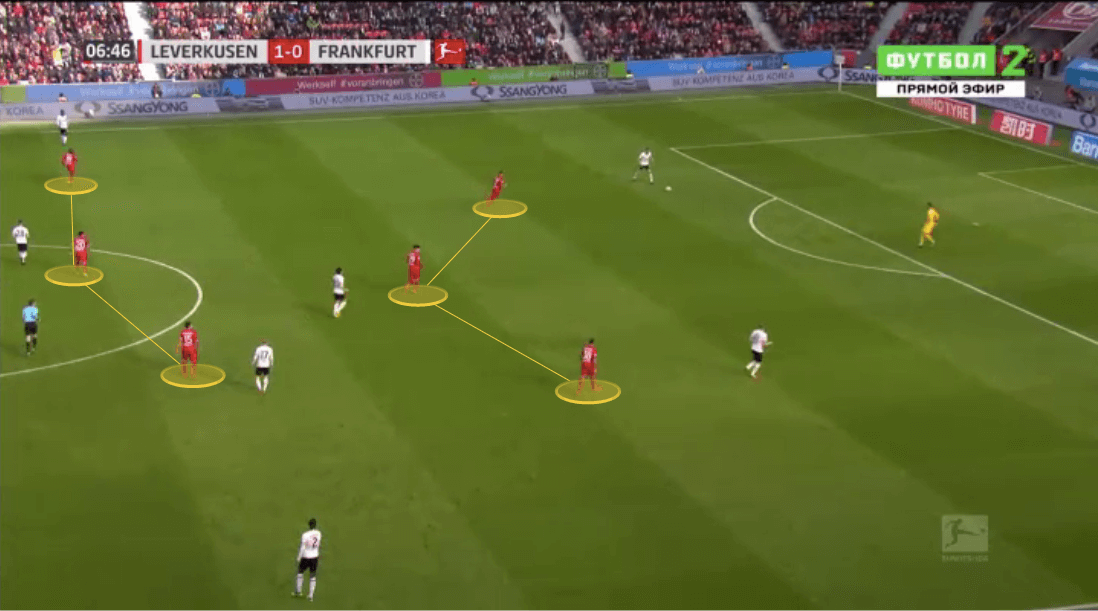
Key players: Kai Havertz, Moussa Diaby, Kevin Volland
Expected points: 41.5
Actual Points: 47
Remaining fixtures: Werder Bremen (a), Borussia Mönchengladbach (a), Wolfsburg (h), Freiburg (a), Bayern Munich (h), Schalke (a), Koln (h), Hertha Berlin (a), Mainz (h)
Bayern Munich – Suffocate opponents with possession, plenty of crossing, excellent ball progressors, and a fluid front four
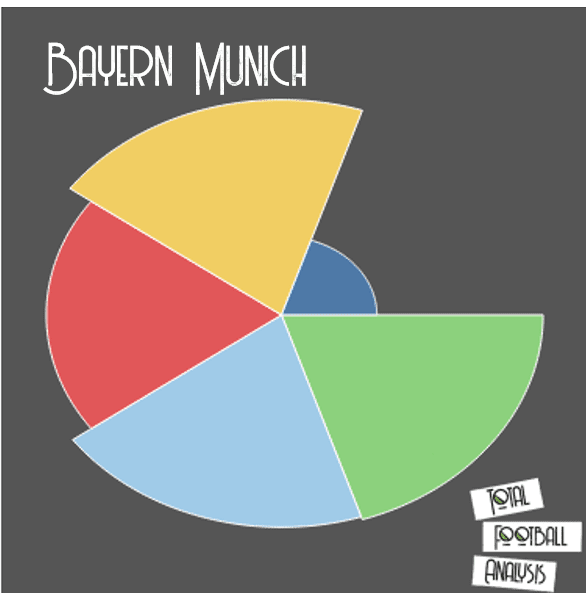
There are a few similarities between Leverkusen and Bayern, in that they both have a lot of possession, and put in a lot of crosses. Bayern average 66.8% possession, which is the most in Europe’s top five. However, they are better at breaking down teams than Leverkusen are. Bayern average 99.65 progressive passes per game, with an incredible 85.9% completion. This is the most progressive passes and the highest completion on these types of passes in Europe’s top five leagues.
Bayern generally operate in an asymmetric 4-2-3-1, with Benjamin Pavard playing deeper at right-back than expected of his teammate at left-back, Alphonso Davies.
Davies gets autonomy over his left-flank, and his ability to cover this wing so effectively allows whoever is playing in front of him, most often Serge Gnabry or Phillipe Coutinho, the option to operate in the left half-space. Davies has been a revelation at left-back, and hasn’t been tested a great deal defensively. He joins Bayern’s attack at will, and we will often see them playing with a front five when he pushes up. He hangs out wide on the left-wing, and as the winger in front of him, tucks inside, it forces the opposition right-back to make a decision whether to tuck inside and give Davies space or stay a little wider in an effort to neutralise this threat, but in doing so give up space inside. He’s able to take these positions due to the deeper positioning of Thiago in build-up play.
Thiago is truly what makes this team tick, though. He drops in between Bayern’s centre-backs in build-up play and orchestrates the attacks from deeper areas, allowing the full-backs, particularly the aforementioned Davies, to push up into higher areas, and therefore allow Bayern’s front four to play inside in more dangerous positions.
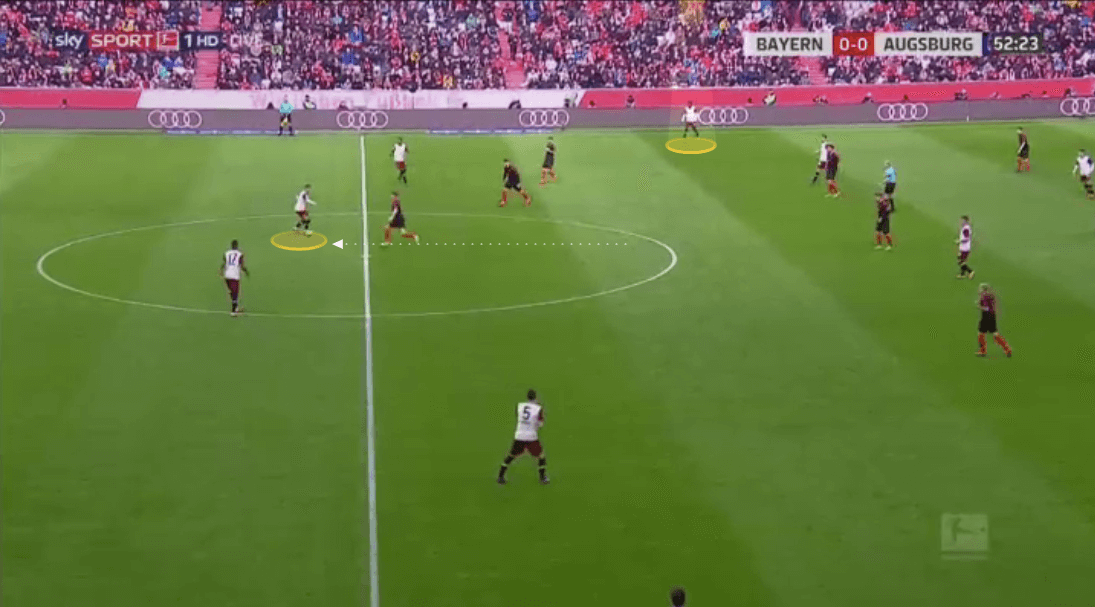
Robert Lewandowski spearheads an incredibly potent attack, where he plays as less of an orthodox number nine and along with the two wingers either side of him, and Thomas Müller, who has had a truly outstanding campaign, playing as a shadow striker behind him, will operate as a relatively fluid front four, shifting positions frequently and constantly looking to draw the defence out of position enough to create enough space for a laser-accurate pass from the likes of Joshua Kimmich or Thiago Alcântara.
Bayern put in more crosses than any other team in Europe, and that is perhaps as much down to the great amount of possession they are afforded, like Leverkusen. With teams dropping back so deep there is more space on the flanks. However, they are still potent from these areas and won’t just put crosses in during developed attacking phases. Davies provides a great threat on the counter, and Lewandowski thrives on receiving crosses in the space between goalkeeper and centre-backs.
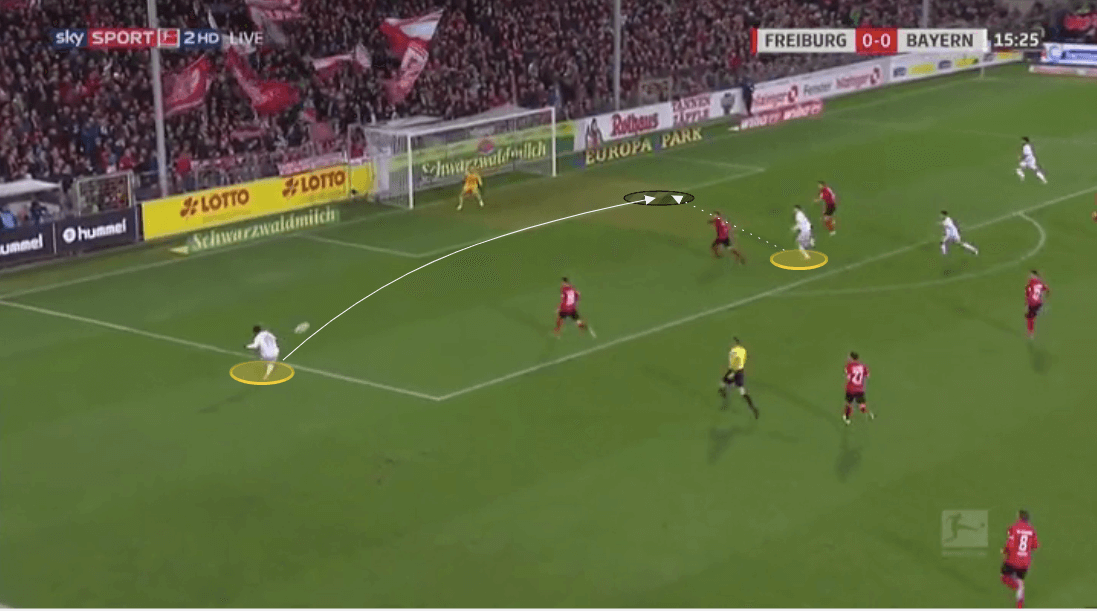
Bayern are very dominant and have possession for long periods of the game. Their centre-backs position themselves well inside the opposition half when Bayern are in advanced areas, and should the opposition hook the ball clear, they are there to receive and immediately recycle the ball, putting a stranglehold on their opponents and making it difficult for them to get out of their own half.
Again, similarly to Leverkusen, Bayern press with great intensity. If they can win the ball back in high areas they have the players in advanced positions to make the opposition pay instantly. However, if they can force the opposition to play long, they can regain possession quickly, which is also an excellent outcome for them. Their 7.66 PPDA is the most intense in the league.
Their basic structure can be seen below as they push all of their forwards and midfielders high with the wide attackers blocking off passing lanes from the keeper to the full-back, but ready to press the centre-backs who have split wide. The pivot is covered by the centre-forward and shadow striker, whilst their two central-midfielders man-mark in the middle.
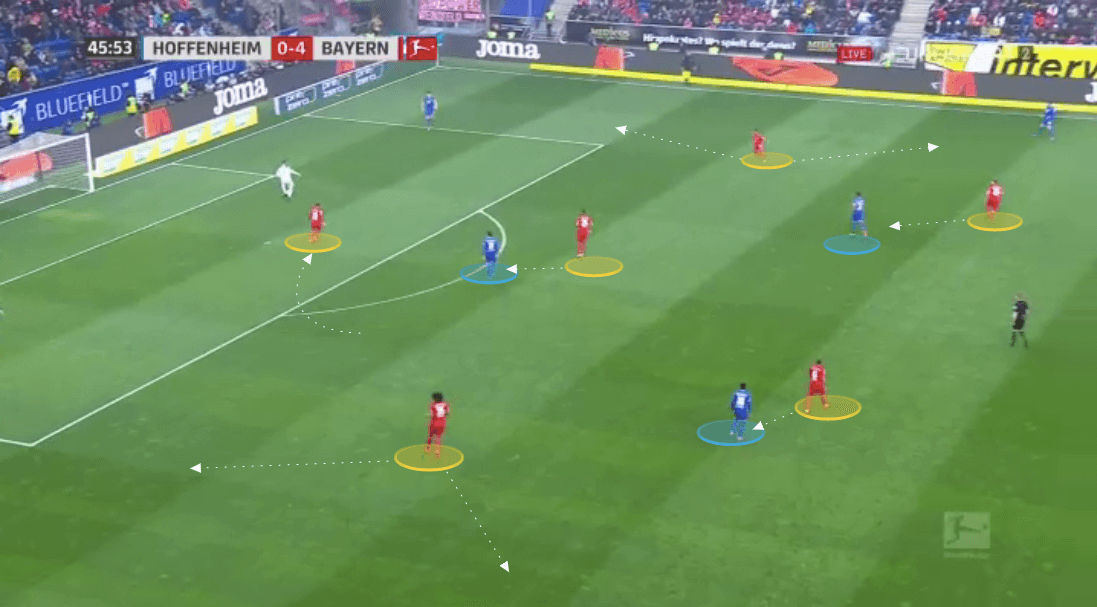
As the ball goes right they can squeeze over as a unit with the centre-forward picking up the pivot, allowing the midfield to switch across.
Along with Leipzig, they have the best defence in the league, conceding just 26 goals, whilst they have the most potent attack, scoring 73.
Key players: Too many to mention but Lewandowski, Müller, Kimmich, Thiago and Davies are truly world-class talents. At this point, people might also be asking why I haven’t said Gnabry. Sorry about that. He’s great too.
Expected points: 53
Actual Points: 55
Remaining fixtures: Union Berlin (a), Eintracht Frankfurt (h), Borussia Dortmund (a), Fortuna Düsseldorf (h), Bayer Leverkusen (a), Borussia Mönchengladbach (h), Werder Bremen (a), Freiburg (h), Wolfsburg (a)
You are going to love what Total Football Analysis are bringing you this weekend.
Starting with the Reiverderby in the German Bundesliga this coming Saturday, May 16 – Total Football Analysis will be bringing you live match commentary and analysis of Borussia Dortmund vs Schalke, kicking off at 14:30 UK.
Borussia Dortmund – Use a 3-4-3 to create space to play forward, wing-backs and inside-forwards dangerous together, Haaland…
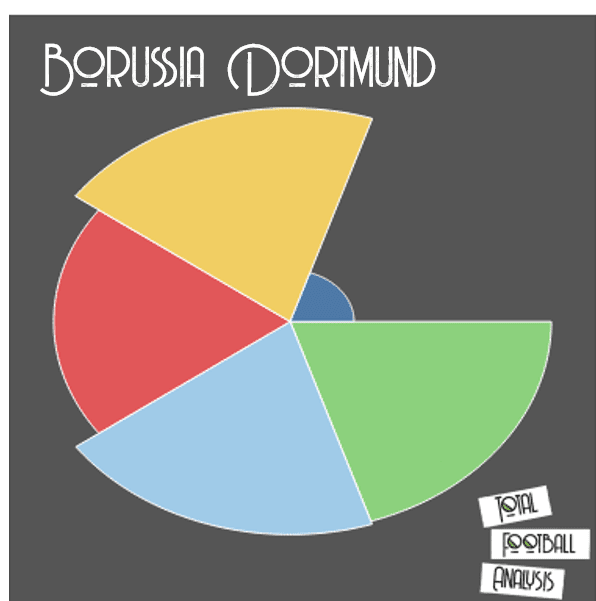
Dortmund cannot afford any more slip ups, as they sit four points behind Bayern, with nine games left to play.
Favre has switched Dortmund’s formation to a 3-4-3 this season with great success.
Playing with the back three gives Mats Hummels time and space to launch his accurate longer passes when it suits, and it has extended Łukasz Piszczek’s career too, as he has slotted in quite nicely to this back three, with Hummels, and either Manuel Akanji or Dan Axel-Sagadou generally operating on the left of the three. They have been sloppy defensively this season, but have shown signs of coming good at the right time, keeping four clean sheets in February.
High-flying wing-backs Achraf Hakimi and Raphaël Guerreiro suit the system perfectly, whilst they operate in conjunction with Jadon Sancho and Thorgan Hazard, who are effectively inside forwards, with Erling Haaland leading the attack. Sancho and Hazard work perfectly in this system, as the high positioning of Hakimi and Raphaël Guerreiro stretches the opposition back four, allowing these the inside forwards to tuck inside into the half-spaces.
If Haaland drops deep to receive a direct pass from the Dortmund defence, and brings an opposition centre-back with him, Sancho and Hazard will tuck behind him and occupy the space created by Haaland’s run. It’s perhaps not even controversial anymore to suggest that they are better without club captain Marco Reus.
Their two central-midfielders, which is Axel Witsel paired with either Emre Can or Julain Brandt, will drop deep in build-up play, stretching the opposition horizontally too, and creating diagonal passing lanes for the wide centre-backs to hit Haaland when he drops deep. Otherwise, Witsel dictates the tempo, constantly dropping in to receive possession and continuing to circle the ball. Brandt is an excellent ball progressor and will drive forward with the ball himself, whilst Can was an astute signing in January and has added some steel and defensive reliability to the midfield.
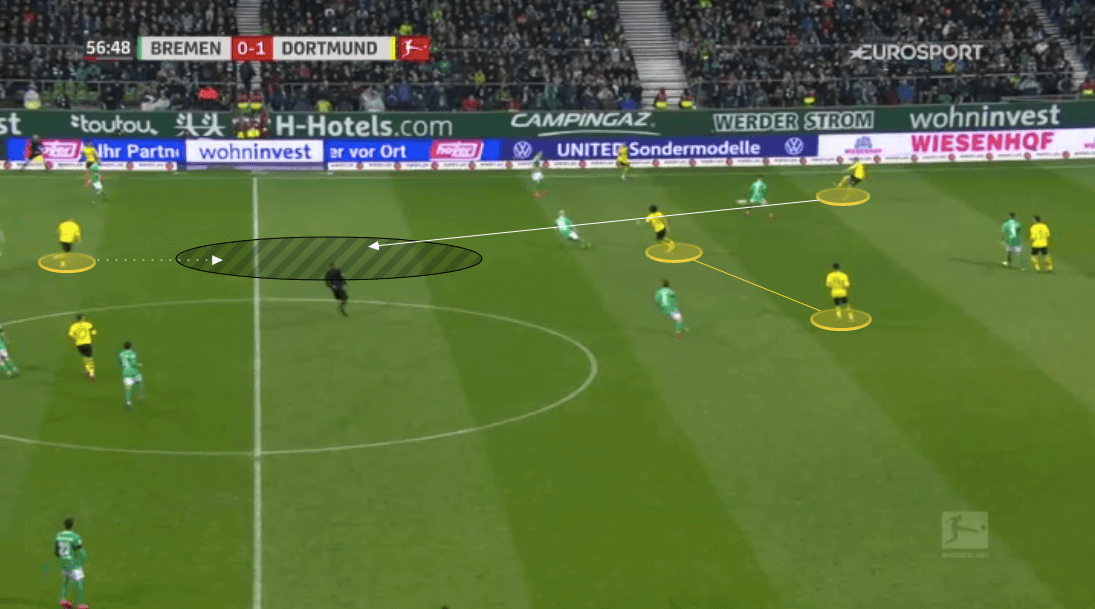
In the final third they engage in quick interchanges with the wing-back on their flank to get behind the opposition defence, and if they can get the ball into a position to cut it back, Haaland may well be one of the deadliest players in the world in these areas.
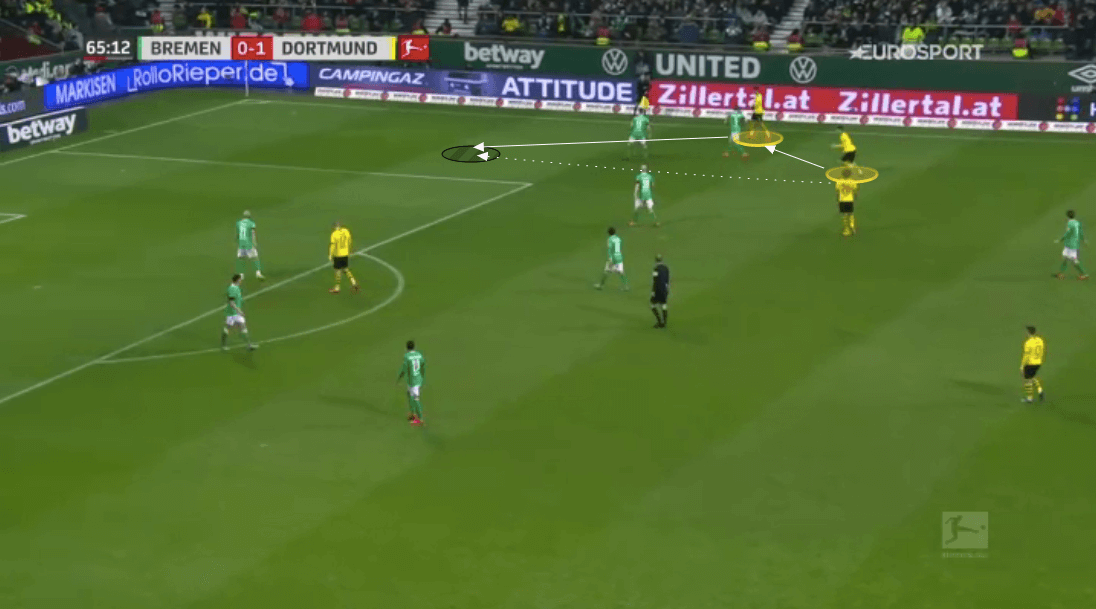
He toys with his marker, darting late to either the front or back post to meet the pull-back. His pace and power make him an incredibly difficult player to mark on a break like the one below.
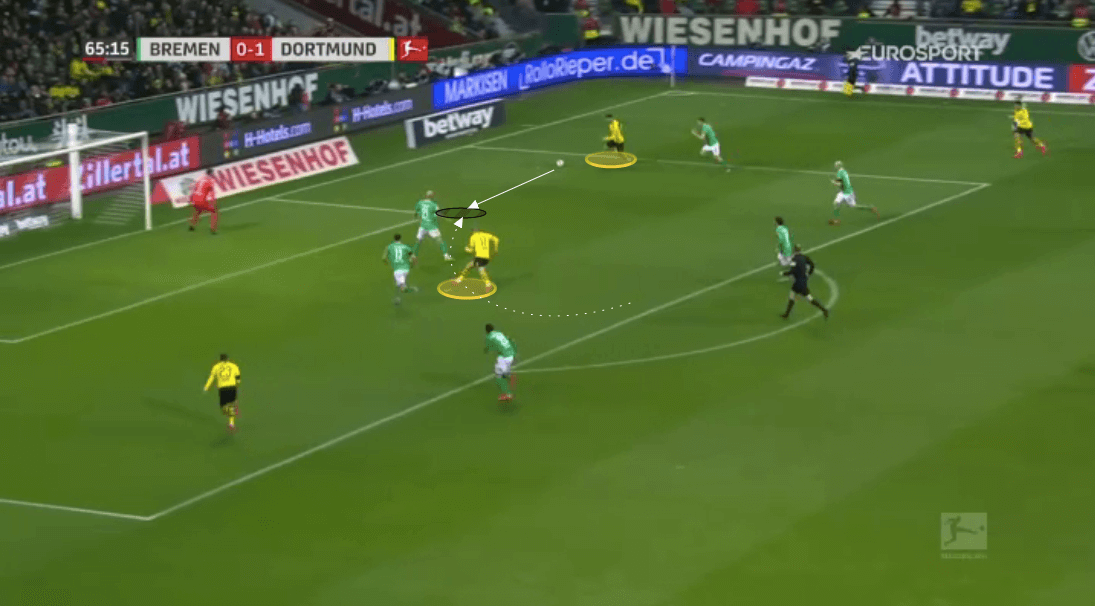
Key players: Erling Haaland, Jadon Sancho, Axel Witsel
Expected points: 42.9
Actual points: 51
Remaining fixtures: Schalke (h), Wolfsburg (a), Bayern Munich (h), Paderborn (a), Hertha Berlin (h), Fortuna Düsseldorf (a), Mainz (h), RB Leipzig (a), Hoffenheim (h)
Borussia Mönchengladbach – Vertical football with plenty of support around the ball, slick offensive transitions, good pressing, and tactical flexibility
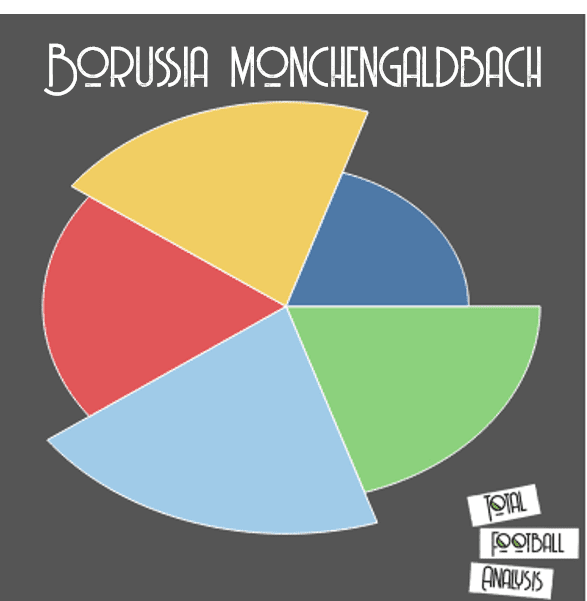
Borussia Mönchengladbach have been a surprise package this season, and despite a couple of slip ups, are hanging on in the title race, as they currently reside in fourth place, on 49 points.
Mönchengladbach are a flexible side under Head Coach Marco Rose and have fielded a plethora of different formations this season, albeit he tends to favour a 4-2-3-1.
They favour vertical football, looking to play the ball into the furthest man open, and quickly surround this player with close passing options to ensure ball security and continued forward passage. The central-midfielders will sit deep to provide space for passes to be played into one of the forwards but will work quickly to close the gap and provide support.
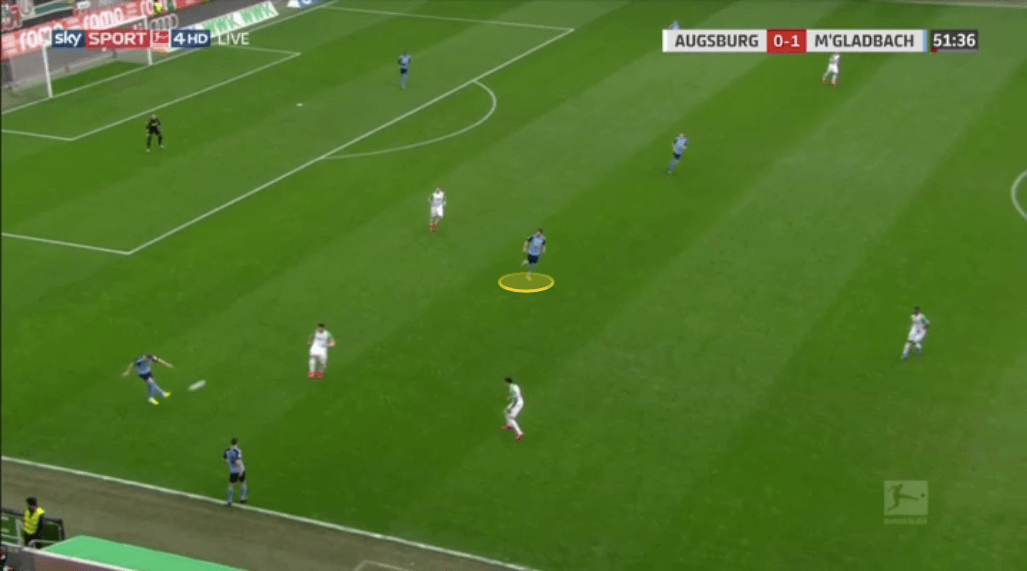
We can see an example of how quickly they support the forwards with Jonas Hofmann reacting incredibly quickly from starting level with Mathias Ginter, as he plays the long pass into Pléa, to being within ten yards of the forward to receive the knockdown, as well as there being four immediate options around Pléa in total.
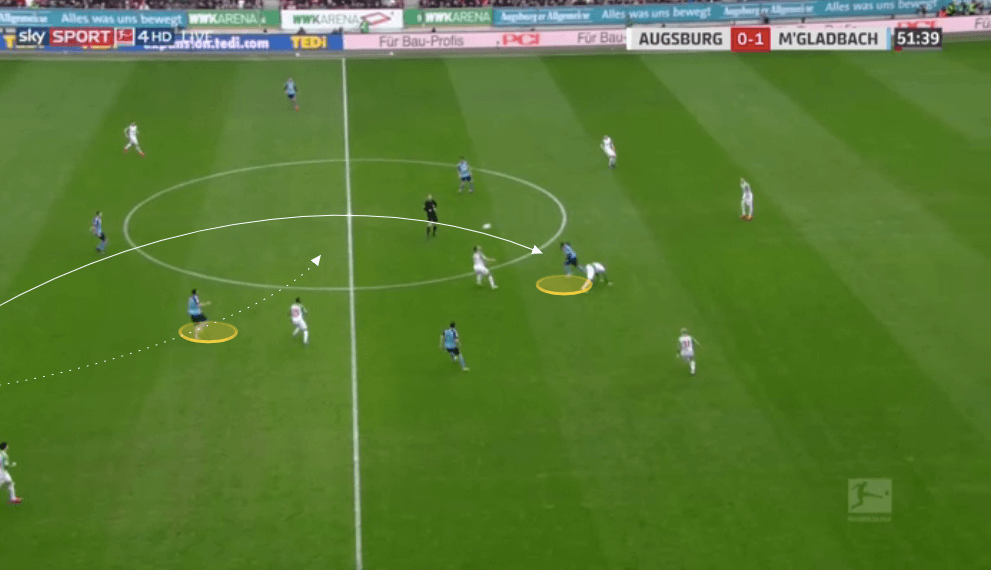
In attack, Alassane Pléa has excellent movement and composure in front of goal and is good in the air too. His second goal against Mainz this season is well worth a watch and may well be one of the quirkiest finishes of all time. Along with Pléa, the 1v1 ability of Breel Embolo and Marcus Thuram can be devastating if they are given space to attack players and it can be a frightening front line if Rose decides to field these three together. Overall they are patient in working good opportunities, and only PSG have a higher xG per shot in Europe’s top five leagues.
Similarly to Leverkusen and Bayern, they are another good pressing team, and press with intensity but intelligently too, being aggressive in their positioning to stop teams from playing out easily. Perhaps their second goal against Leipzig this season is the best example of this.
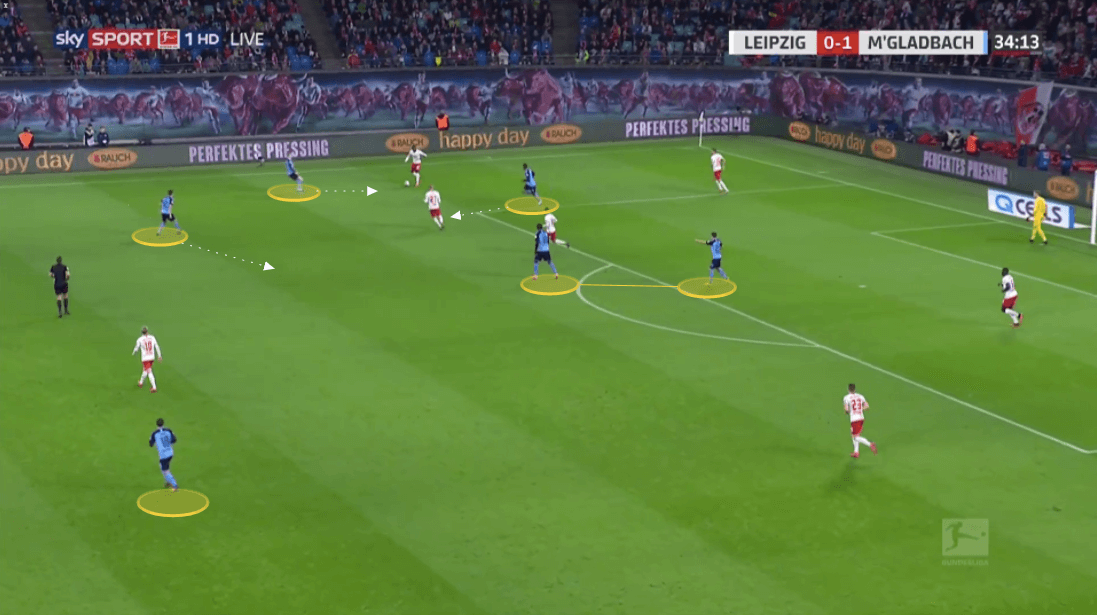
Leipzig aren’t able to play inside from this wide area due to the aggressive positioning of Mönchengladbach’s midfield. We can also see how loaded they are in the forward positions. As Leipzig seek to force a way out, Florian Neuhaus’s positioning means he can cut the pass out instantly and play straight into the feet of Hofmann.
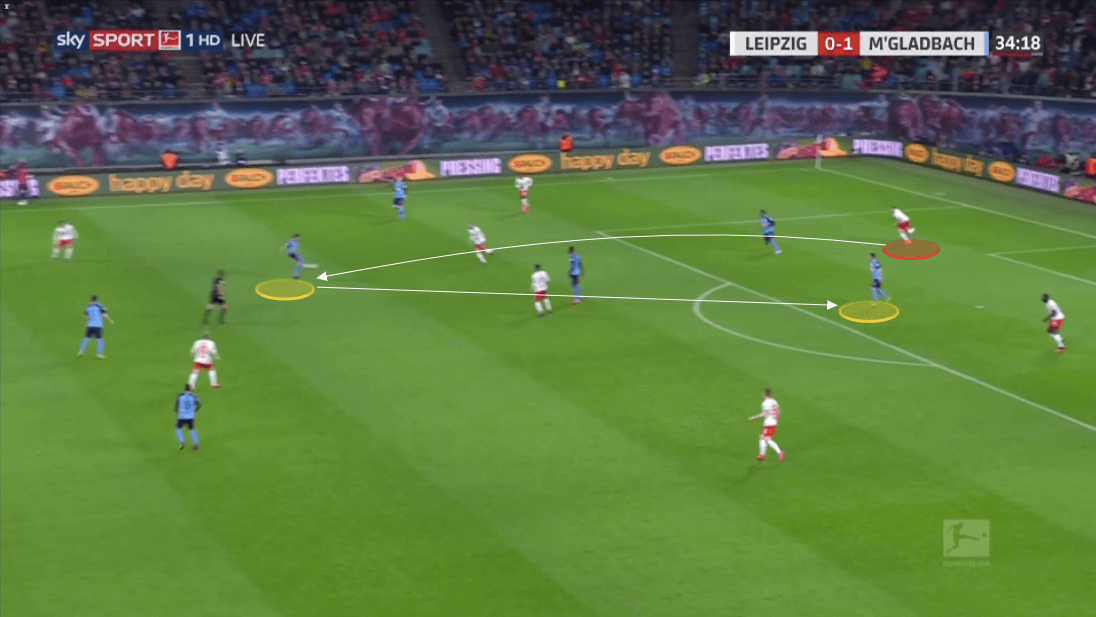
If you’re a Premier League fan looking for possible summer transfer targets this may well be the team for you. They possess a core of young, exciting talents alongside some older but perhaps previously overlooked gems that have come good in this title-chasing season. Any of Dennis Zakaria, Mathias Ginter, Stefan Lainer, Neuhaus, Thuram or Pléa would be great pickups for most Premier League teams and most of these players will probably have no shortage of suitors this summer.
Key players: Yann Sommer, Zakaria, Thuram, Pléa
Expected points: 42.4
Actual Points: 49
Remaining fixtures: Eintracht Frankfurt (a), Bayer Leverkusen (h), Werder Bremen (a), Union Berlin (h), Freiburg (a), Bayern Munich (a), Wolfsburg (h), Paderborn (a), Hertha Berlin (h)
Eintracht Frankfurt – A change to a back four, Filip Kostić and crosses, dangerous aerially, and direct passes
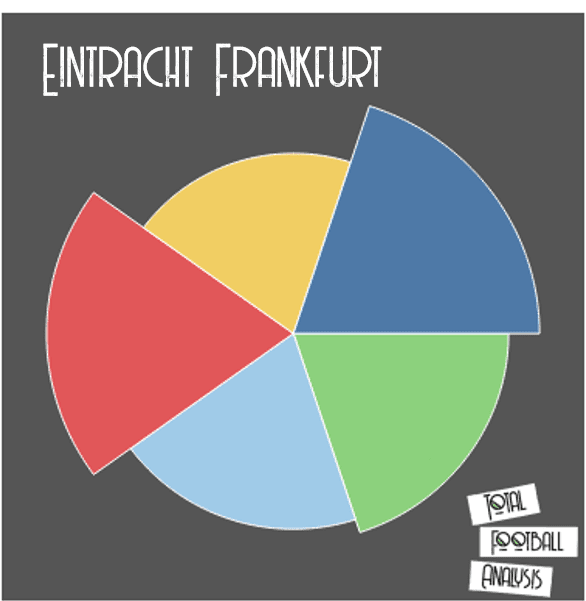
Frankfurt underperformed in the first half of the season but have been stronger in the second half. This is still a team in a transition period, and are in 12th place in the league right now on 28 points, and although only six points clear of 16th place right now, fans should still expect a comfortable mid-table finish.
Frankfurt put in a lot of crosses, and are the only competitor to Bayern’s crossing crown. Danny da Costa is excellent on the right side, but it is Kostić who is their biggest threat. He has been relieved of his defensive duties (not that he paid much attention to them) as a left wing-back in Frankfurt’s 3-4-1-2, and instead operates as an outright left-winger as Head Coach Adi Hütter has switched to a back four this season. Kostić now has the incredibly promising Evan N’Dicka behind him and has continued to contribute heavily in the attack, notching 12 goals and 13 assists in all competitions.
Kostić’s 7.71 crosses per game are the most of anyone in the league and his 31% cross accuracy may not seem that impressive, but due to the sheer volume of crosses he puts in, it’s actually pretty good.
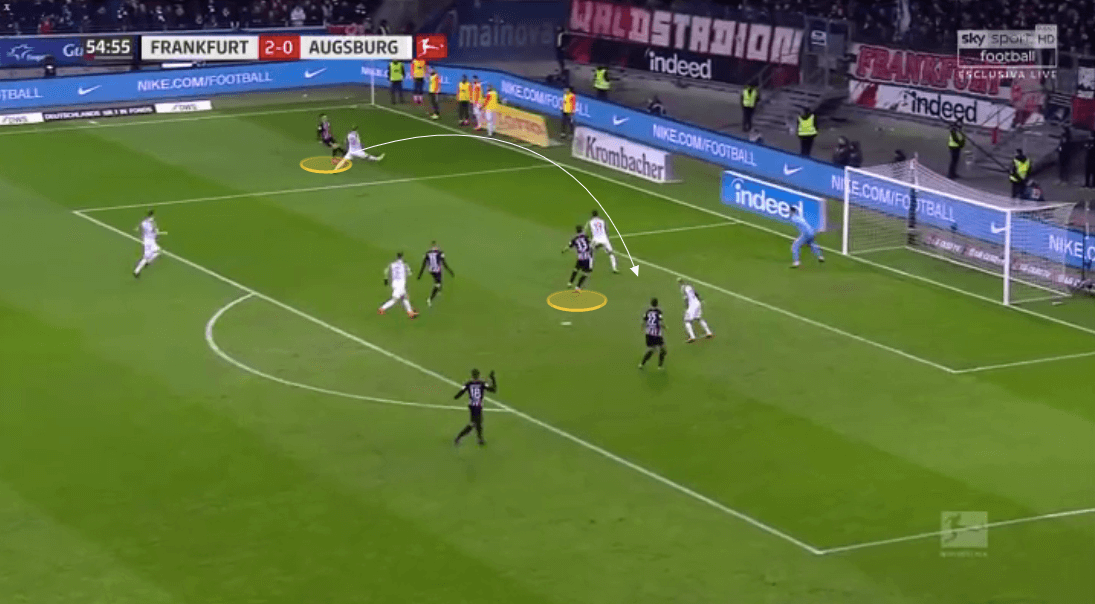
Their front line was gutted following the summer departures of Luka Jović, Sebastien Haller, and Ante Rebić, and the raised eyebrows, inquisitive looks, and murmurs of “panic buy” following the signing of Bas Dost late in the summer transfer window, have appeared to be proven right as the big man has struggled to find any consistent form this season. However, he plays as a target man for a team that plays a lot of direct passes, as we can see from their graph. In fact, only Union Berlin manage more long passes per 90 minutes.
Goncalo Paciencia initially stepped up and showed some promise, but his goals have dried up in 2020, and consequently so have his starts.
André Silva’s five goals and two assists in ten games this calendar year suggest he has found his feet and he could be a big player for Frankfurt in the run into the end of the season.
Goals have been an issue for the team and Martin Hinteregger, who has been solid throughout this season, has been important scoring seven goals and making two assists this season, being particularly lethal from set-pieces, an area Frankfurt have excelled in. These goals have grabbed the attention but Hinteregger is a solid defender and a key player in progressing the ball in the build-up for Frankfurt. He sits deep as an anchor to keep circulating the ball from side-to-side. As Frankfurt overload one side Hinteregger has the passing range to make a quick and accurate switch to the other side to release one of Frankfurt’s dangerous wide players. He is useful for playing accurate long passes too. As well as into Dost as a target man, as previously mentioned, the forward line will look for the quick ball over the top as well.
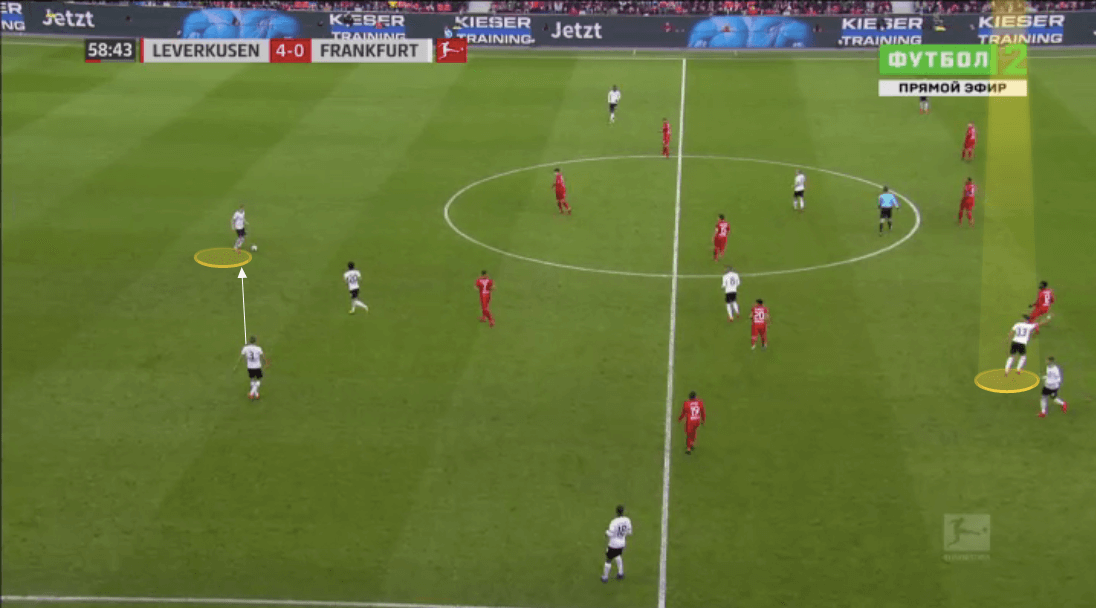
Key players: Kostić, Hinteregger, André Silva
Expected points: 34.2
Actual Points: 28
Remaining fixtures: Borussia Mönchengladbach (h), Bayern Munich (a), Freiburg (h), Wolfsburg (a), Werder Bremen (a), Mainz (h), Hertha Berlin (a), Schalke (h), Koln a), Paderborn (h)
Conclusion
It is difficult to go into too much detail on these teams, and there is plenty missing in these brief analyses, however, hopefully, there is enough here for you to go into the weekend’s fixtures with an idea on the how these six teams play, and you may well recognise some of the tactics highlighted in this analysis.
Tomorrow we will release part two, focusing on the next six teams.

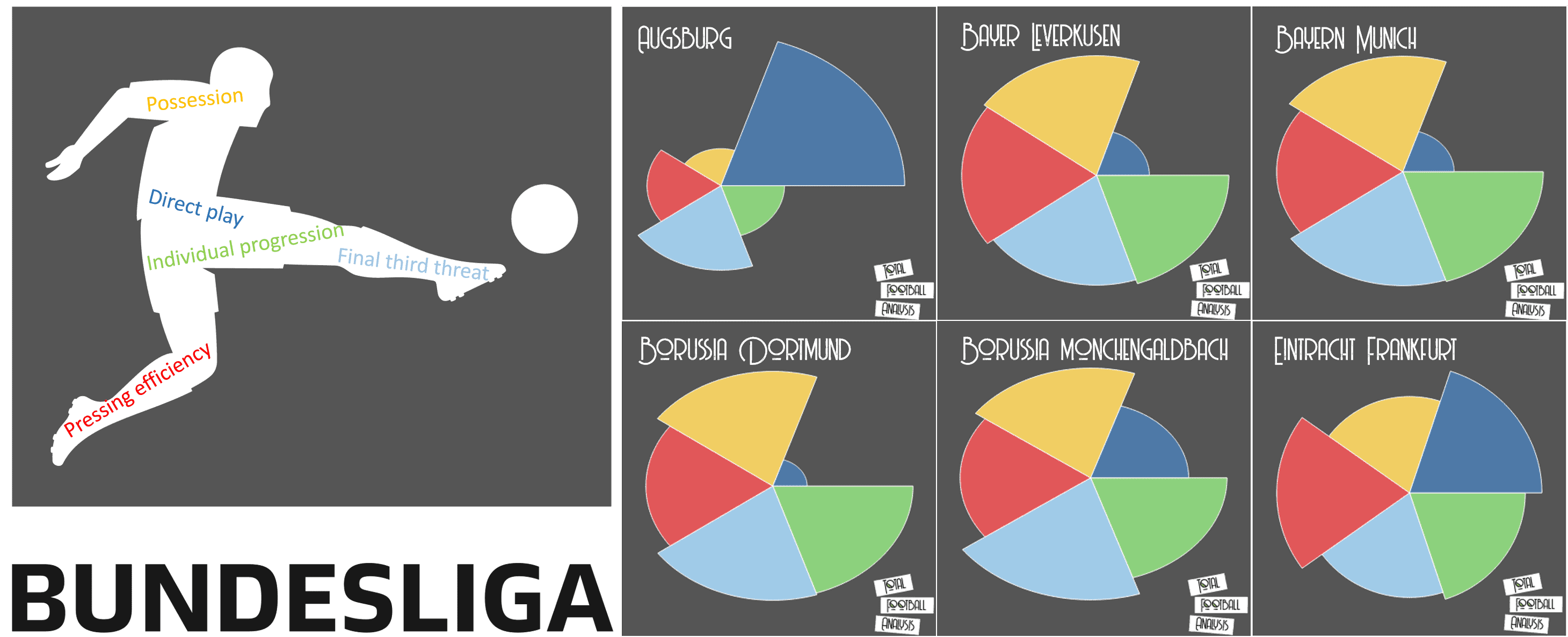



Comments